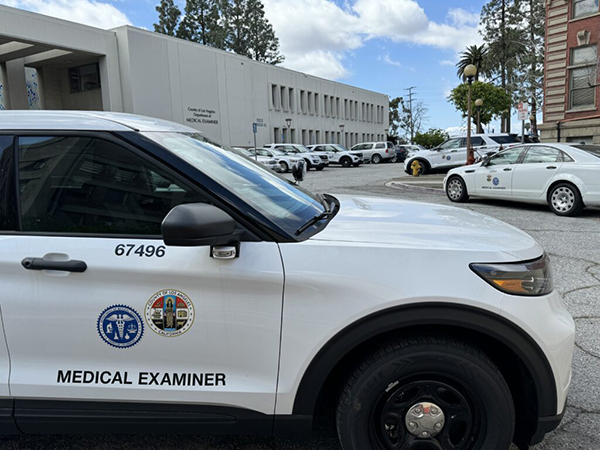By William W. Funderburk, Jr.
Guest Columnist
Los Angeles is facing a reckoning — not just with infrastructure, but with memory.
On Oct. 14, I testified before the Los Angeles Department of Water and Power Board of Commissioners alongside Rev. Mac Shorty and Aura Vasquez. We weren’t just speaking — we were reclaiming. Public water and public power are not abstractions. They are legacies. And they must be governed with transparency, not secrecy.
We honored the late Cindy Montañez, the former assistant general manager of the DWP whose leadership fused environmental justice with institutional courage. Cindy didn’t just advocate — she architected. Her legacy demands more than ceremony. It demands metrics.
Rev. Mac Shorty, a 57-year-old resident of Watts, testified from the heart. “We are the true ratepayers,” he said.
He spoke of the Jordan Downs redevelopment — a $3 billion solar-powered transformation — and the need for affordability. “Without power,” he said, “we’re in the dark ages.”
Mac’s testimony framed equity not as policy, but as survival. He spoke of trauma, resilience and the disconnect between board members and communities like Watts, where 58 gangs intersect and civil rights memory still pulses.
Aura Vasquez, former DWP commissioner and environmental justice advocate, called for institutional courage and regional transparency. Her remarks echoed the urgency of Mapping Water and Power, the open-source framework now gaining traction across coalitions.
Commissioner George McGraw was also honored for his three years of service. His work on Owens Lake — where the DWP shifted from litigation to collaboration — was a turning point.
Vegetation-based controls replaced flooding. Dust levels dropped. And the New York Times ran a front-page story quoting me on the stakes: “public power.” George expanded the definition of community, built trust with tribal nations and brought climate equity into the boardroom.
But peace is fragile. Today, the Keeler Dunes are drying again. Public memory is fading. And DWP’s own Equity Metrics Data Initiative — launched in 2016 with 50 metrics — has quietly vanished. Thirty-five metrics were never published. No public discussion. No public disclosure. This isn’t housekeeping. It’s concealment.
I’ve archived every version of those metrics. I’ve written the white papers. I’ve briefed the commissioners. And I’ve asked, repeatedly, for a public reckoning. It hasn’t come.
Meanwhile, the DWP deepens its partnerships through the Southern California Public Power Authority (SCPPA). But SCPPA operates in the dark.
Joint infrastructure, pooled procurement, shared decarbonization goals — none of it is tracked publicly. There are no scorecards. No regional benchmarks. No shared lessons. When metrics disappear, so does accountability.
That’s why we launched Mapping Water and Power. It’s a discipline, not a dashboard. It demands cognitive rigor — countering intuitive shortcuts and sunk-cost bias with deliberate analysis. It’s rooted in four pillars:
1. Service Reliability: Track outages by census tract. Monitor leak responses using heat and health indices. Publicize repair timelines to counter the planning fallacy.
2. Customer Access and Program Reach: Map real-time enrollment in solar rebates, efficiency grants and low-income rates. Identify outreach barriers. Frame “claimed” vs. “unclaimed” uptake to avoid bias.
3. Procurement and Contracting: Disaggregate spending by women-, minority-, and veteran-owned firms. Publish subcontracting goals. Sunset underperforming contracts.
4. Workforce and Training: Track diversity across hires, promotions, and retention. Map training pipelines. Compare projected vs. actual enforcement outcomes.
Austin Beutner’s mayoral announcement this week — “Los Angeles is adrift” — may be political, but it’s also diagnostic. The metrics are known. The receipts are abundant. And the cover-up is real.
If the Bass administration is listening, this article is a wake-up call.
William W. Funderburk Jr. is a senior advisor and board member of the Permacity Foundation. He is also the architect of the Los Angeles Department of Water and Power’s Equity Metrics Data Initiative.





